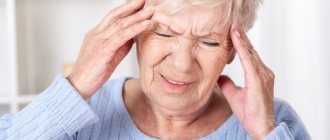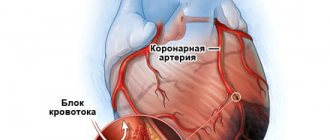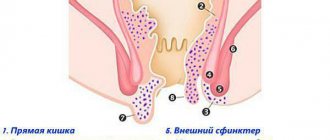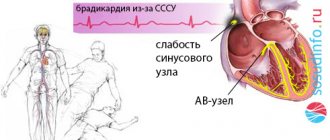HomeChildren's ClinicCardiologyArterial hypotension and hypertension
Arterial hypotension
is a symptom reflecting varying degrees of decrease in blood pressure.
Arterial hypotension can also decrease briefly in healthy children at different times of the day (in the early morning hours), with a change in body position. This decrease in blood pressure is called physiological. It can occur after eating, while in a stuffy room, in a state of mental or physical fatigue, and under other circumstances. In addition, a physiological decrease in blood pressure without affecting the child’s well-being and performance can occur: in child athletes (outside of training); in children living in areas with low atmospheric pressure; during the period of adaptation to a hot tropical or high-mountain climate; due to the constitutional (hereditary) characteristics of the body.
From 4 to 10% of children have a pathological decrease in blood pressure. Such hypotension may be reversible or persistent.
Arterial hypertension
- a persistent increase in blood pressure above the 95th centile of the distribution scale of blood pressure values for a specific age, gender, weight and body length of the child.
Increased blood pressure occurs in 5-10% of children, more often in adolescence. There are primary and secondary (associated with any diseases) arterial hypertension.
Causes
Primary hypotension
- Hereditary predisposition.
- Internal and external influences.
- Perinatal pathology: birth trauma, increased intracranial pressure, etc.
- Frequent respiratory infections in a child.
- Sedentary lifestyle.
- The presence of chronic foci of infection.
- Non-compliance with the daily routine.
- Mental, psychological overload and stress.
- Excessive physical activity.
Secondary hypotension
- Hypothyroidism (lack of synthesis of thyroid hormones).
- Insufficient production of pituitary hormones.
- Diabetes.
- Infectious diseases and intoxications.
- Allergic reactions of the body.
- Heart diseases (heart defects, myocarditis, heart failure).
- Traumatic brain injuries.
- Blood loss (including due to heavy and prolonged menstrual bleeding).
- Anemia (“anemia”).
- Lack of vitamins.
- Hypotrophy (lack of body weight).
- Side effect of drug treatment.
- Somatic diseases: bronchial asthma, neurodermatitis, chronic tonsillitis.
Causes of primary hypertension:
- Hormonal changes in the body during puberty.
- Violation of the daily routine.
- Insufficient sleep duration.
- Increased physical (for example, sports) activity.
- Excessively long time spent at the computer, psycho-emotional trauma and stressful situations.
Causes of secondary hypertension:
- Diseases of the endocrine system.
- The influence of the autonomic nervous system.
- Renal pathology.
- Cardiovascular pathology.
- Brain lesions.
- Poisoning.
The problem of arterial dystonia in children is extremely relevant. The greatest attention in pediatrics today is paid to arterial hypertension as a prelude to arterial hypertension in adults. Issues of arterial hypotension in children and adolescents remain in the shadows, although accumulating factual material shows that hypotensive conditions are more common in children than in adults and amount to up to 20.9%.
Hypotension is a symptom that reflects varying degrees of decrease in blood pressure. The term “...tension” most accurately reflects the pressure of liquids in vessels and cavities. The term “...tonia” is used to assess the tone of the smooth muscles of the vascular wall. It is known that a decrease in the tone of precapillaries—arterioles—is most often the main hemodynamic factor in a prolonged decrease in blood pressure. This determines the possibility of using the term arterial hypotension along with the term arterial hypotension.
There are many classifications of hypotonic conditions. In Russia, the classification of N.S. is most widely used in practical medicine, including in pediatrics. Molchanov.
Classification of hypotonic states by N.S. Molchanov
1.Physiological hypotension:
— hypotension as an individual variant of the norm;
— hypotension due to increased training (in athletes);
— adaptive compensatory hypotension of highland residents;
2.Pathological hypotension (primary and secondary)
Arterial hypotension is considered physiological in the absence of clinical manifestations of the disease: there are no subjective complaints or manifestations of autonomic dysfunction.
Primary arterial hypotension develops against the background of vegetative-vascular dystonia syndrome with pronounced clinical symptoms characteristic of vagotonia. It can occur with an unstable, reversible flow. In some children, the disease develops into a pronounced persistent form - hypotension. Hypotonic disease includes a persistent decrease in blood pressure, accompanied by severe symptoms in the form of dizziness, headaches, and orthostatic dysregulation.
Secondary (symptomatic) arterial hypotension occurs against the background of diseases of the cardiovascular system, occurring with heart failure syndrome (myocardial disease, heart rhythm disturbances), endocrine diseases (hypofunction of the adrenal glands, thyroid gland, etc.), pathology of the nervous system, accompanied by increased intracranial pressure , anemia of various origins, while taking medications (antihypertensives, antihistamines, antidepressants, some antiarrhythmic drugs).
Currently, primary arterial hypotension is considered as a multifactorial pathology, in the development of which hereditary predisposition and the complex effect of exo- and endogenous factors are extremely important. Hereditary predisposition to arterial hypotension is revealed when collecting a family history in up to 60.9% of cases, most often on the maternal side. In patients with an asthenic constitution, arterial hypotension is an almost obligatory attribute.
It should be noted that the unfavorable course of pregnancy and childbirth in combination with low blood pressure in the mother during pregnancy forms a negative metabolic memory in the intrauterine patient and autonomic dysfunction with a tendency to lower blood pressure. Most often, arterial hypotension manifests itself in adolescence, which is due to puberty and the personality characteristics of the teenager. Among the exogenous factors predisposing to the development of arterial hypotension, it should be noted chronic psycho-emotional stress (incomplete families, death of loved ones, etc.), foci of chronic infection, unfavorable social conditions, mental fatigue and physical inactivity.
The pathogenesis of arterial hypotension remains insufficiently studied at present. No specific causes of the disease have been established, but there are many theories of the occurrence of the disease: neurogenic, humoral, constitutional-endocrine, vegetative. Today, a violation of the mechanisms of autoregulation of central hemodynamics is considered to be clearly proven - a discrepancy between cardiac output and total peripheral vascular resistance, usually due to a decrease in the latter. It should be noted that as hypotension progresses, total peripheral resistance continues to decrease. In children and adolescents, the most significant mechanism for reducing peripheral resistance is autonomic. The participation of biologically active compounds with antihypertensive properties - prostaglandins, natriuretic peptides, nitric oxide, kinins, etc. - is extremely important in the development of the pathological process.
Arterial hypotension is characterized by an unusually high polymorphism of complaints, an abundance and lability of clinical manifestations, and a striking asthenovegetative syndrome, leading to unsatisfactory environmental adaptation and a decrease in quality of life. The main symptom of arterial hypotension is a decrease in blood pressure. Diagnosis of arterial hypotension is based on the results of 3 measurements of blood pressure using an age-appropriate cuff (Table 1), with an interval of 3-5 minutes. When assessing the results obtained, unified criteria for arterial hypotension (Table 2) and the centile method are used. Arterial hypotension is defined as blood pressure values below the 10th percentile for the corresponding age and gender.
Table 1.
Cuff width for children according to WHO
| Age | Cuff width |
| Up to a year | 2.5 cm |
| 1-3 years | 5-6 cm |
| 4-7 years | 8-8.5 cm |
| 8-9 years | 9 cm |
| 10-13 years | 10 cm |
| 14-17 years old | 13 cm |
Table 2.
Unified criteria for arterial hypotension in children
| Age | Systolic blood pressure (mm Hg) | Diastolic blood pressure (mm Hg) |
| 7-9 years | 80 | 40 |
| 10-13 years | 85 | 45 |
| 14-15 years old | 90 | 50 |
| 16-17 years old | 90 | 55 |
Daily blood pressure monitoring (ABPM) allows you to identify the initial manifestations of arterial dystonia - changes in the circadian rhythm and blood pressure. When assessing the hypotension index (the time of decrease in blood pressure during the day), it is necessary to remember that its value above 25% indicates pathology: with labile hypotension, the index fluctuates between 25-50%, with a stable form -50%.
The clinical picture of arterial hypotension is dominated by psychoneurological disorders in the form of emotional lability, irritability, weather sensitivity, anxiety, various phobias, decreased physical and mental activity, respiratory neurosis in the form of sighs and a feeling of lack of air, poor tolerance of stuffy rooms is common. Patients report dyspeptic disorders in the form of nausea, less often vomiting, aerophagia, complain of spastic abdominal pain, flatulence, intestinal dyskinesia, constipation, often of a spastic nature. Possible cardialgia, a feeling of interruptions in the heart.
Cephalgia deserves special attention, often in the morning, often immediately after sleep. They are accompanied by weakness and malaise. Headaches are paroxysmal, pulsating, intense, and are often localized in the frontoparietal region. Pain is provoked by weather fluctuations and emotional stress. Dizziness occurs when changing body position. Provoking moments, as a rule, are prolonged orthostasis, prolonged stay in a stuffy room.
Criteria for the severity of arterial hypotension are:
- stable nature of arterial hypotension;
— intensity of cardialgia;
— presence and frequency of vegetative crises;
— degree of psychophysical maladjustment;
- orthostatic dysregulation and fainting.
Fainting (syncope) is a common symptom of severe arterial hypotension. Syncope is a sudden short-term loss of consciousness and a violation of postural tone with a disorder of cardiovascular and respiratory activity. Clinical manifestations of fainting are characterized by dizziness, tinnitus, darkening of the eyes, severe weakness, and unpleasant sensations in the abdominal cavity. Then there is a decrease in muscle tone, “sagging to the floor,” pallor, shallow breathing, weakness, and a decrease in blood pressure. After emergency measures are provided or independently, consciousness and correct orientation are restored, skin hyperhidrosis and bradycardia are determined, and dizziness and nausea often persist.
A careful differential diagnosis is necessary between fainting that occurs against the background of arterial hypotension of neurovegetative origin and fainting of another origin - cardiogenic, neurogenic, fainting due to endocrine diseases, etc.
Diagnosis of arterial hypotension includes:
1. Collection of genealogical and clinical-anamnestic data;
2. Carrying out ECG, ECHO-CG, ABPM;
3. EEG registration;
4. Study of autonomic homeostasis;
5. Clinical and biochemical blood tests (activity indicators, glucose, electrolytes, cholesterol, etc.);
6. According to indications, psychological testing is carried out;
7. Consultations with specialists to exclude symptomatic (secondary) arterial hypotension;
Treatment of arterial hypotension includes non-drug and drug treatments. In case of labile arterial hypotension, preference is given to non-drug effects. Persistent and prolonged arterial hypotension requires the combined use of non-drug and drug therapy.
Non-drug treatment includes: normalization of the daily routine, including rest and work patterns. A full night's sleep is necessary, and daytime rest is encouraged. Daily exposure to fresh air is recommended for up to 2 hours a day. Morning exercises are required, followed by water procedures, available at any home, that promote vascular training. The diet involves eating 4-6 times a day without limiting salt in an optimal water regime. Massage is indicated - general, cervical-collar area, hands, calf muscles.
Physiotherapeutic methods of treatment that have a stimulating effect are widely used for arterial hypotension: electrophoresis according to Vermeule on the collar area with solutions of magnesium sulfate, caffeine, mesatone, bromocaffeine. Electrosleep with a frequency of 10 Hz is used. Acupuncture optimizes neurovegetative balance and improves microcirculation. Water procedures—fan and circular showers, underwater massage showers—have proven themselves well among children and adolescents. Therapeutic baths have a positive effect on vascular tone. It is important to use various methods of psychotherapy in treatment that correct the patient’s relationship with the environment.
If non-drug therapy is ineffective, the following groups of drugs are used: adaptogens, anticholinergic drugs, nootropics and cerebroprotectors, antioxidants, and, if necessary, tranquilizers and antidepressants. As a rule, drug treatment of arterial hypotension begins with adaptogens that gently stimulate the central nervous system, and most importantly, have a positive effect on the sympathetic division of the autonomic nervous system. The most commonly used are plant adaptogens (Table 3). They have an adrenomimetic effect, contribute to the formation of adaptive reactions by regulating the balance between the processes of excitation and inhibition in the cortex and subcortical vegetative formations. Adaptogens are prescribed once a day in the morning with a course of treatment lasting up to three weeks.
Table 3.
Adaptogens
| Adaptogen groups | Herbal remedies |
| General tonic | Trifol, dandelion, fennel, spirullina, kelp, nettle, echinacea, thyme, centaury |
| Adaptogens with a moderate stimulating effect, II series | Green tea, licorice, coffee tree |
| Adaptogens with the greatest stimulating effect, first row | Ginseng, Schisandra chinensis, zamanika, Rhodiola rosea, aralia |
It is necessary to remember the undesirable effects of adaptogens:
- the phenomenon of exhaustion of the nervous system due to disorderly, uncontrolled use;
- increased blood pressure and psycho-emotional agitation;
- the phenomenon of overdose with the development of paradoxical reactions;
Adaptogens of groups 1 and 2 are not advisable to prescribe for heart rhythm disturbances; Schisandra is contraindicated for intracranial hypertension, ginseng is contraindicated for bleeding.
Of the anticholinergic drugs, the most widely used are combination preparations of belladonna - belloid, bellataminal, bellaspon.
The use of nootropic drugs is pathogenetically justified in patients with arterial hypotension, since this group of patients quite often suffers from cerebral insufficiency and immaturity of cortical-subcortical relationships. Glycine, piracetam, phenibut, Cortexin and GABAergic drugs have proven themselves to be effective in pediatric practice.
In order to improve cerebral hemodynamics and microcirculation, a course of treatment with cinnarizine and vinpocetine is used. Actovegin and Oxibral have an optimizing metabolic effect.
The use of antioxidant therapy and correction of energy-deficient diathesis are also necessary for patients with arterial hypotension.
Indications for prescribing tranquilizers are pronounced neurotic manifestations, emotional stress, phobias, and hidden anxiety. Preference is given to activating tranquilizers and daytime anxiolytics (trioxazine, grandaxin, etc.).
Thus, an integrated, etiopathogenetic approach to the treatment of arterial hypotension makes it possible to monitor its course, prevent its progressive course and decrease in the quality of life of patients.
N.N. Arkhipova
Kazan State Medical Academy
Literature:
1. Belokon N.A., Kuberger M.B. Diseases of the heart and blood vessels in children: A guide for doctors in 2 volumes. - M.; Medicine,!1987.T.1-P.303-337
2. Korovina N.A. al. Autonomic dystonia in children // Guide for doctors. M., 2006, 67 p.
3. Kushnir S.M., Antonova L.K. Autonomic dysfunction and autonomic dystonia. - Tver., 2007, 215 p.
4. Kurochkin A.A. et al. Neurocirculatory dystonia in children and adolescents (literature review and clinician’s view on controversial issues of terminology, etiology, pathogenesis, clinical picture and treatment) // Russian Bulletin of Perinatology and Pediatrics. - 1999. - No. 6. - P. 21-25.
5. Leontyeva I.V. Lectures on pediatric cardiology. - M., 2005. P. 405-503.
6. Guide to pharmacotherapy in pediatrics and pediatric surgery: T.5.-Clinical cardiology. - ed. prof. Belozerova Yu.M.. - M., 2004.-P.170-176.
7. Tvorogova T.M., Korovina N.A. Arterial hypotension in children and adolescents.//Russian medical journal.-2007.-No. 21.- P.1519-1524.
Symptoms
Primary hypotension
- Emotional instability, frequent mood swings; tearfulness, increased sensitivity.
- General weakness, increased fatigue.
- Aching, pressing headache.
- Dizziness (usually after sleep, during a long break between meals).
- Brief stabbing or aching pain in the heart after physical activity, in a state of fatigue.
Secondary hypotension
- Frequent headaches in the back of the head and temples.
- Expanding headaches in the morning in the frontal region when sitting or lying down with the head bowed.
- Frequent unilateral migraine-like pain, accompanied by darkening of the eyes, nausea, and sometimes vomiting.
- Meteor dependence.
- Sleep disorders (drowsiness or insomnia).
- Chest pain without physical activity.
- Arrhythmias.
- Dyspnea.
- Cold extremities.
- Increased sensitivity to cold.
Hypertension:
- Headache.
- Fatigue, irritability.
- Excess body weight.
- Autonomic dysfunction.
- Undifferentiated mesenchymal dysplasia (asthenic physique, microanomalies in the structure of the heart and kidneys, etc.).
To diagnose blood pressure abnormalities in children, blood pressure is measured in both arms; in the next 2 weeks, blood pressure is measured regularly 3 times a day in order to clarify daily blood pressure fluctuations. The examination includes examination of the fundus, ECG, examination of cerebral vessels (rheoencephalography) - as indicated; consultation with a neurologist, cardiologist, endocrinologist and other specialists (as indicated).
Prevention
- Normalization of the psychological situation at school, creation of a calm atmosphere and home comfort.
- Maintaining an age-appropriate daily routine.
- Limit watching movies and computer games (especially in the evening before bed).
- Elimination of physical and mental overload, alternation of work and rest.
- Distribution of teaching load.
- Regular exercise.
- Daily stay in the fresh air for at least 2 hours and walking for 30 minutes.
- A nutritious diet, 4-5 meals a day.
- Massage of the collar area.
Read more about pediatric cardiology at the YugMed clinic
Arterial hypotension. First aid
With the development of a hypotensive crisis and fainting, it is important:
- Place the person in the feet-over-head position. If this happens in transport and there is nowhere to put it, you can lower your head down below your knees.
- Unbutton your clothes and, if possible, provide access to fresh air.
- If the person is conscious, calm him down and give him water to drink.
- You can rub your ears and massage the collar area and fingertips (the endings of many of the body’s energy channels are located here).
- In case of prolonged fainting, call an ambulance.
Make an appointment










